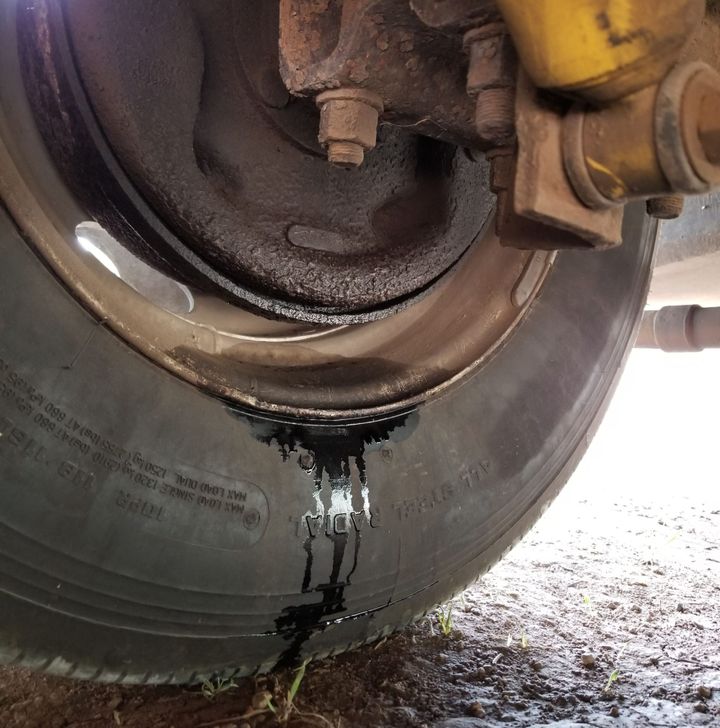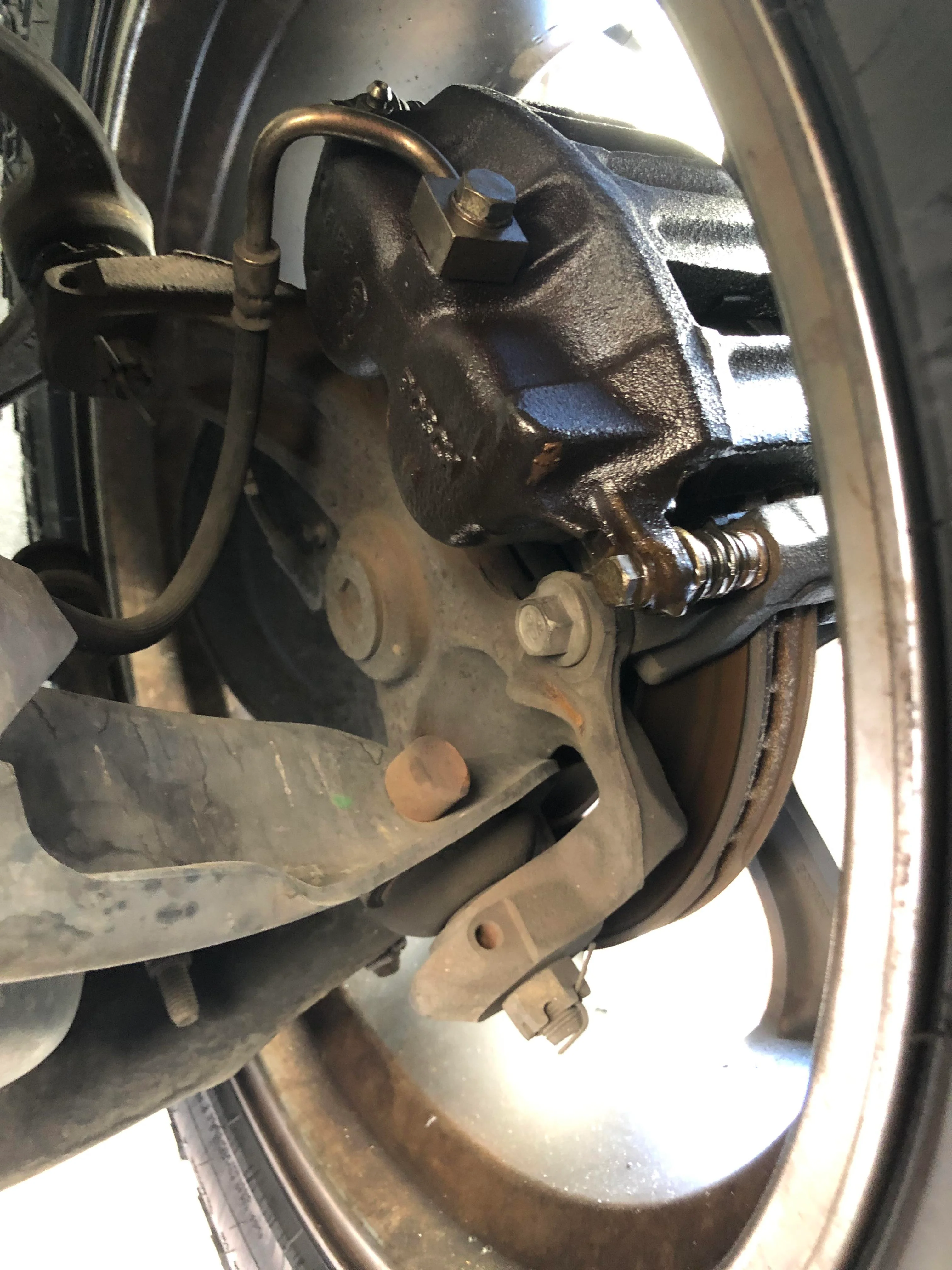


Brake fluid is a critical component of a vehicle's braking system, responsible for transmitting the force applied to the brake pedal to the brake calipers or wheel cylinders. A leak in the brake fluid can compromise the entire braking system's performance, leading to potential safety hazards. It is crucial to identify and address a brake fluid leak promptly to ensure safe driving conditions.

Before we dive into the nitty-gritty of leak detection and repair, let's explore the primary causes of fluid leaks in detail.
Over time, the gaskets and seals that keep fluids contained can degrade, leading to leaks in various systems. Here's a breakdown of the most common areas affected:
| System | Gaskets/Seals |
|---|---|
| Engine | Valve cover gaskets, oil pan gaskets, timing cover gaskets |
| Cooling System | Water pump gaskets, thermostat housing gaskets, radiator gaskets |
| Transmission | Transmission pan gaskets, input/output shaft seals |
| Brakes | Caliper seals, master cylinder seals |
As these gaskets and seals age, they can become brittle, crack, or lose their sealing properties, allowing fluids to escape.
The hoses and lines that carry fluids can also be a source of leaks. These components can become loose, cracked, or damaged due to various factors:
Age and wear
Heat exposure
Physical impact
Improper installation or maintenance
Common hoses and lines prone to leaks include:
Engine oil hoses
Coolant hoses
Transmission cooler lines
Power steering hoses
Brake lines
Leaks can also occur due to failed components in various systems. Some examples include:
Water pump failure (coolant leak)
Radiator failure (coolant leak)
Oil pan failure (engine oil leak)
Transmission pan failure (transmission fluid leak)
Brake caliper failure (brake fluid leak)
Master cylinder failure (brake fluid leak)
Impact from an accident or collision can cause significant damage to fluid lines, reservoirs, or other components, resulting in leaks. Even minor fender benders can lead to fluid leaks if the impact affects sensitive areas.
Now, let's talk about how to identify and diagnose fluid leaks effectively.
One of the easiest ways to spot a leak is to perform a visual inspection. Here's what to look for:
Puddles under the car: Check for puddles after the car has been parked for a while. The color and location of the puddle can help identify the type of fluid leaking.
| Fluid Color | Potential Leak Source |
|---|---|
| Reddish-brown | Engine oil |
| Green or orange | Coolant |
| Red | Transmission fluid |
| Clear or light brown | Brake fluid |
| Dark brown or black | Power steering fluid |
Seepage or wetness: Inspect the engine bay, undercarriage, and around components like the transmission, power steering, and brakes for any signs of fluid seepage or wetness.
Low fluid levels: Check and top up fluid levels regularly, as low levels can indicate a leak.
If you're having trouble pinpointing the source of the leak, you can use specialized tools to help trace it:
Leak detection dye: These dyes can be added to the fluid system and will glow under UV light, making it easier to identify the exact location of the leak.
UV light: Used in conjunction with leak detection dyes, UV lights can help illuminate the dye and pinpoint the source of the leak.
Don't forget to listen for any unusual noises that may indicate a fluid leak:
Whining: A whining noise can indicate a power steering fluid leak.
Grinding: A grinding noise can be a sign of a transmission fluid leak or low fluid levels.
These auditory cues can help you identify potential issues before they become more severe.
Once you've identified the source of the leak, it's time to tackle the repair. Here's a quick rundown of common repair procedures for different types of fluid leaks:
Replace failed gaskets, seals, or the oil pan
Tighten loose components or replace damaged hoses/lines
Replace failed hoses, water pump, radiator, or thermostat housing
Repair or replace a damaged cylinder head gasket
Replace failed seals, gaskets, or the transmission pan
Repair or replace damaged cooler lines
Replace failed hoses, seals, or the power steering pump
Replace failed brake lines, calipers, or the master cylinder
Depending on the severity of the leak and the extent of the repair required, the cost can vary significantly. For example, a simple gasket or seal replacement might cost a few hundred dollars, while a major component replacement or rebuild could run into the thousands.

Prevention is key when it comes to fluid leaks. Here are some essential tips to help you avoid future issues:
Follow the recommended maintenance schedule: Stick to the manufacturer's recommended schedule for fluid changes and component inspections/replacements. This can help identify potential issues before they become major problems.
Use high-quality fluids: Always use the fluids recommended by the manufacturer. Cheap, low-quality fluids can degrade faster and contribute to leaks.
Avoid excessive heat exposure or physical impact: Excessive heat or physical impact can damage components and cause leaks. Be mindful of your driving conditions and habits.
Address leaks promptly: Don't ignore leaks, no matter how small they may seem. Addressing them promptly can prevent further damage and costly repairs down the line.
Regular inspections: Perform regular visual inspections of your vehicle, checking for signs of leaks or fluid seepage. Early detection can save you a lot of time and money in the long run.
Proper maintenance: Follow the manufacturer's recommended maintenance schedule for fluid changes, filter replacements, and other routine services. Neglecting maintenance can lead to premature component failure and leaks.
Avoid harsh driving conditions: Extreme temperatures, rough terrain, or excessive idling can put additional stress on your vehicle's components, increasing the risk of leaks.
Use genuine replacement parts: When replacing components, always use genuine or high-quality replacement parts. Aftermarket or low-quality parts may not provide the same level of performance or durability.
Fluid leaks are a common issue in cars, but with the right knowledge and approach, they can be effectively identified, repaired, and prevented. As a mechanic, I've seen firsthand the importance of regular maintenance, prompt repairs, and using high-quality fluids.
By following the tips and guidelines outlined in this comprehensive guide, you can keep your vehicle running smoothly and avoid the headaches and expenses associated with fluid leaks. Remember, a little preventive maintenance can go a long way in ensuring the longevity and reliability of your ride.
So, the next time you notice a puddle under your car or suspect a fluid leak, don't panic. Take a deep breath, and approach the issue with the confidence of a seasoned mechanic. With the right tools, knowledge, and a bit of elbow grease, you can tackle fluid leaks like a pro.
The most common type of fluid leak is engine oil, followed by coolant leaks. Engine oil leaks are often caused by worn gaskets, seals, or a damaged oil pan.
Transmission fluid leaks often appear as a reddish or brownish puddle around the middle of the car. The fluid may also have a distinct smell, and you may notice issues with gear shifting.
No, it is not recommended to drive with a power steering fluid leak. Low fluid levels can make steering more difficult and potentially dangerous.
Brake fluid leaks are commonly caused by failed brake lines, calipers, or the master cylinder. Brake fluid leaks should be addressed immediately as they can compromise braking performance.
Coolant leaks are often identified by bright green, orange, or pink puddles under the car. You may also notice a sweet smell and potential overheating issues.
Yes, impact from an accident or collision can damage fluid lines, reservoirs, or other components, resulting in leaks.
Leak detection dyes and UV lights can be used to pinpoint the exact location of a leak, especially in hard-to-reach areas.
It's recommended to perform regular visual inspections, at least once a month, to check for signs of fluid leaks or seepage.
Yes, using low-quality or non-recommended fluids can cause premature degradation of gaskets, seals, and other components, increasing the risk of leaks.
Following the recommended maintenance schedule, using high-quality fluids, addressing leaks promptly, and avoiding harsh driving conditions can help prevent fluid leaks.

Sarah isn't your average gearhead. With a double major in Mechanical Engineering and Automotive Technology, she dived straight into the world of car repair. After 15 years of turning wrenches at dealerships and independent shops, Sarah joined MICDOT to share her expertise and passion for making cars run like new. Her in-depth knowledge and knack for explaining complex issues in simple terms make her a valuable asset to our team.



